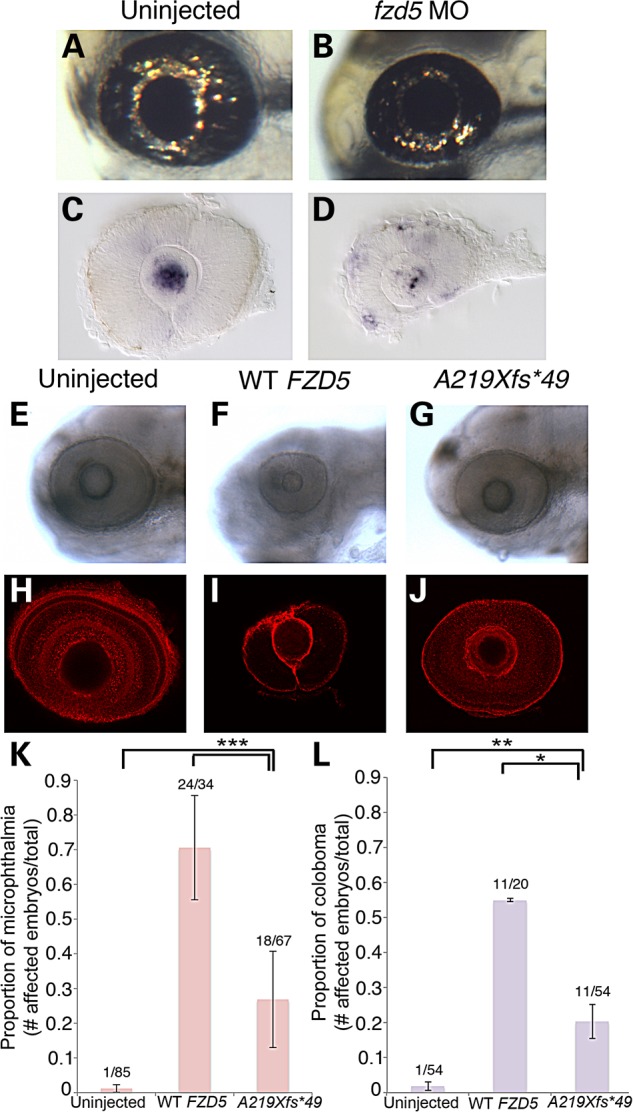Figure 2.

Morpholino knockdown and overexpression of FZD5 causes microphthalmia and coloboma in zebrafish. (A and B) Representative images of live embryos at 3 dpf, either uninjected (A) or injected with 1.2 pmol of fzd5 translation blocking morpholino (MO; B). (C and D) In situ hybridization for GFP was performed at 28 hpf in Tg[TOP:dGFP] embryos to assess levels of canonical Wnt signaling in uninjected (C; n = 26/26 eyes) or fzd5 morphants (D; n = 23/25 eyes). Retinal GFP expression was increased in morphants, while lens expression was decreased (D compare with C), suggesting a tissue-specific function for fzd5 in Wnt signaling. (E–L) Embryos were injected at the one-cell stage with either 200 pg human WT FZD5 mRNA or A219Xfs*49 FZD5 mRNA and imaged to analyze eye size and prevalence of coloboma. Injection of WT FZD5 caused higher incidence of microphthalmia (K, ***P < 0.0002) and coloboma (L, **P = 0.016; *P = 0.008) compared with injection of A219Xfs*49 FZD5 mRNA. All images represent majority of observed phenotypes in each injection group. (E–G) Live images of larvae at 3 dpf; (H–J) eyes labeled with β-laminin antibody at 3 dpf. (K and L) Quantification of ocular phenotypes seen in E–J. (E–L) The number of embryos analyzed for microphthalmia: uninjected (n = 85), WT FZD5 (n = 34), A219Xfs*49 (n = 67), two experimental replicates. The number of embryos analyzed for coloboma: uninjected (n = 54), WT FZD5 (n = 20), A219Xfs*49 (n = 54), two experimental replicates.
